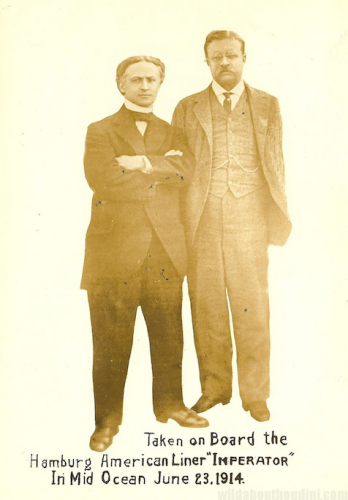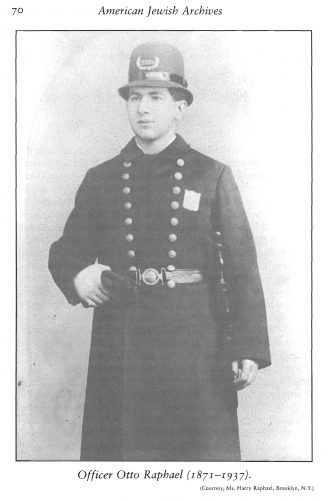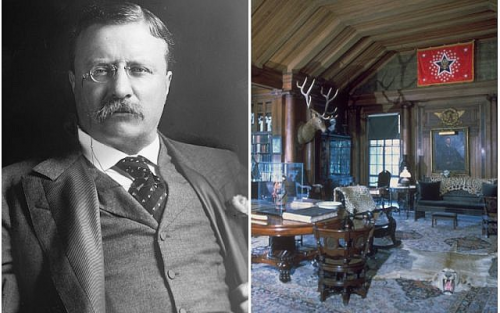Our “Bully”

A blog post by JMM Executive Director Marvin Pinkert. You can read more posts by Marvin here.

President Roosevelt is the subject of my blog post today because yesterday was the 100th anniversary of his passing… and tomorrow is quite probably the centennial of the first time that Kaddish was read at a presidential funeral[1]. I draw this conclusion from a single sentence included in Edmund Morris’ definitive account of the last years of Roosevelt’s life, Colonel Roosevelt (2010). In the detailed description of Roosevelt’s funeral, Morris writes:
…Father Talmage read the litany of committal. Lieutenant Otto Raphael, Roosevelt’s favorite Jewish policeman, muttered his own burial prayer in Hebrew.

Thanks to a wonderful article by Nancy Schoenberg, writing for the American Jewish Archives, I learned that when Theodore Roosevelt became police commissioner in New York, he encouraged Otto Raphael to join the force as part of his police reform efforts. Raphael came to Roosevelt’s attention when Raphael heroically ran into a burning tenement building to save its residents in 1895. For Roosevelt, Raphael was destined to be more than a symbol of the type of courageous, physically fit and mentally sharp officers he wanted to recruit, but also become a lifelong friend and sparring partner (you may recall that Roosevelt enjoyed boxing).
The Raphael story is just a single instance of TR’s longstanding connections to the Jewish community. Roosevelt appoints the first Jewish Cabinet officer, Secretary of Commerce and Labor, Oscar Straus. He is the only head-of-state in his time to vocally condemn the Kishinev pogrom of 1903. He spoke up about the oppression of North African Jews in negotiations over the future of Morocco. In his post-Presidency he was an early advocate for what would become the State of Israel, writing in 1918, that “It seems to me that it is entirely proper to start a Zionist State around Jerusalem.”
An online search of “Roosevelt” and “Jewish” revealed one more remarkable document now on sale as part of the Raab Collection. The article accompanying the offering suggests that there was a move in the Taft administration to appease Russia by creating a racial listing of “Hebrew” in American passports so they could more easily discern whom they wished to bar from the country. In the letter Roosevelt strongly opposes this move, writing to a Jewish friend: ”it is ill-advised to treat what is really a religious matter as a race matter. I know plenty of men, some of them very prominent man, who are of mixed race; and personally I should no more have a man entered on a passport as a Hebrew, than as an Episcopalian, or a Baptist, or a Roman Catholic.”

Just about every national Jewish publication seems to have an article on these surprising artifacts put on display at the Roosevelt home at Sagamore Hill in Long Island. No one seems quite sure why the Roosevelt family received these menorahs (from a non-Jewish family) and why they gave them prominence in their home.
It did remind me of my own personal connection to TR though. In 1988 we were living on the C.W. Post campus, just a few miles from Sagamore Hill. Having named our daughter “Anna Eleanor” in honor of TR’s niece (FDR’s wife), we thought it would be a good idea to give her an early connection to the Roosevelt legacy. She was only 3 ½.

Bully for you Anna. And bully for you, President Theodore Roosevelt.
[1] In a lecture at JMM in 2014, Lincoln scholar Harold Holzer pointed out that Abraham Lincoln was the first president honored by a kaddish prayer, but that prayer was offered in synagogues not at the gravesite.
